Scholastic Art & Writing Awards
Portal for the Alliance for Young Artists & Writers
- Amazon RDS
- Development
- Information Architecture
- Migration
- PostgreSQL
The Alliance for Young Artists & Writers is a nonprofit organization dedicated to identifying and showcasing exceptional artistic and literary talent among students in grades 7–12 across the United States and Canada. Through the Scholastic Art & Writing Awards, the Alliance offers young creatives opportunities for recognition, exhibition, publication, and scholarships. In 2025, more than 100,000 teens submitted more than 300,000 original works across 28 writing and awards categories.

About this Project
The Scholastic Art & Writing Awards Portal is the online platform where students, educators, partners, and judges manage submissions, participation, judging, and awards for regional and national competitions.
Key Features
- Account Creation: Students aged 13 and older can create accounts to submit their work. Educators can link their accounts to their students to provide support throughout the submission process.
- Work Submission: Students use the Portal to upload digital images, videos, and/or documents of their work, select appropriate categories, and provide necessary information such as artist or writer statements.
- Entry Fees & Waivers: Entry fees are required for both individual entries and portfolios. The Portal is specifically designed to handle all related transactions, including fee payments, waiver requests, and refunds, ensuring a streamlined and efficient process.
- Communication Tools: The portal includes messaging features that allow administrators to communicate with participants and educators, ensuring timely updates and support.
- Mobility & Accessibility: The Portal is designed to be user-friendly and accessible on various devices, including smartphones and tablets, facilitating ease of use for all participants.



Project Overview
KWALL leads the development of the Scholastic Art & Writing Awards Portal, in collaboration with technical and business stakeholders from the Alliance for Young Artists & Writers organization and UX design specialists. This initiative focuses on creating a technically robust, user-centered platform that enhances the experience of all user types while supporting the complex, decentralized structure of the program.
In the first awards season, KWALL implemented a refreshed user design, developed a new reporting infrastructure, and resolved many performance issues that in previous years would lead to timeouts and system crashes. The goals achieved were:
- Enhanced Brand Representation: Built a clean, high-quality, and consistent user experience that supports the needs of all users — from students to educators, partners, and administrators.
- Optimized Information Architecture: Redesigned the site’s structure to better serve both primary and secondary audiences, ensuring users can find and interact with relevant information efficiently.
- Designed for Flexibility and Accessibility: Ensured cross-device compatibility and meet accessibility standards to provide an inclusive experience for all users, including individuals with disabilities.
- Improved User Engagement: Enhanced usability to reduce abandonment, improve task completion, and track performance using tools like Microsoft Clarity and Google Analytics.
- Future-Proof the Environment: Improved infrastructure to support robust search, customizable reporting, and clear user pathways.
Technical Implementation Overview & Timeline
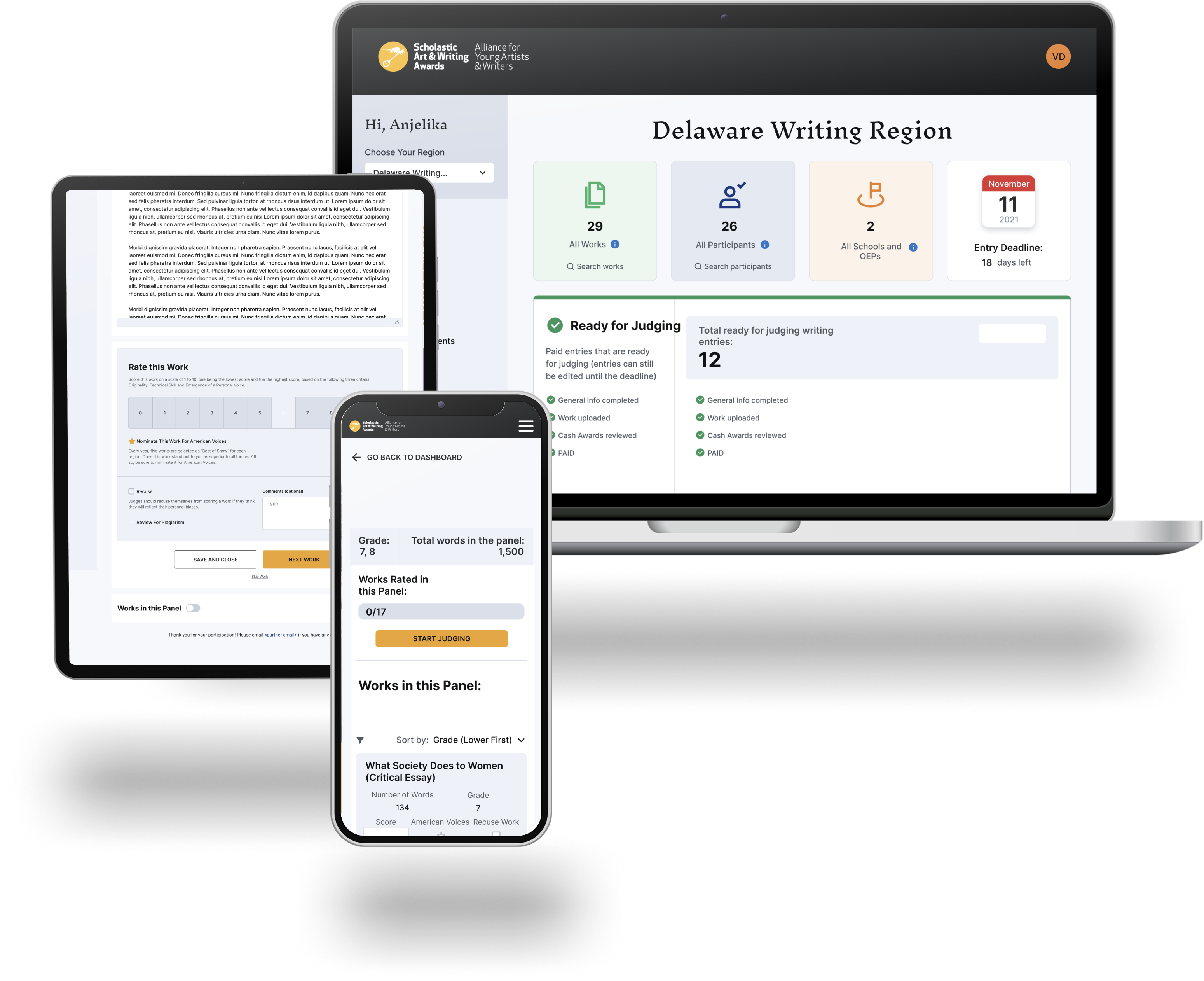
A Technical Triumph
Over 200 APIs were re-architected to run on the new infrastructure, with comprehensive data migration scripts ensuring integrity throughout the transition. To support modern DevOps practices and future growth, we replaced the legacy serverless architecture with a containerized microservices environment using ECS/EKS. This new architecture is fully supported by scalable DevOps tooling for load balancing, observability, and system reliability. The result is a robust, future-ready foundation optimized for performance, maintainability, and ease of expansion.
Related Projects

Mission College
Mission College Mission College partnered with KWALL to execute a transformative redesign of its website, focusing on recruitment, performance, and long-term sustainability. The original site architecture and content management approach had become a barrier to both usability and institutional goals. Key pages were difficult to update, cluttered with competing priorities, and often relied on hardcoded…
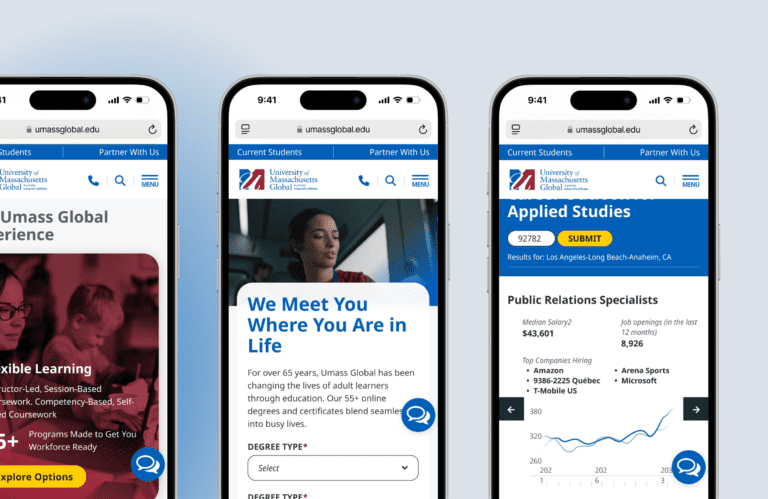
UMass Global
UMass Global UMASS Global, an affiliate of the University of Massachusetts, partnered with KWALL to redesign its public website. The institution serves primarily adult learners seeking accessible, flexible, and career-relevant education online.The website needed to evolve into a modern marketing platform capable of engaging prospective students and supporting key institutional goals. Our Process KWALL led…
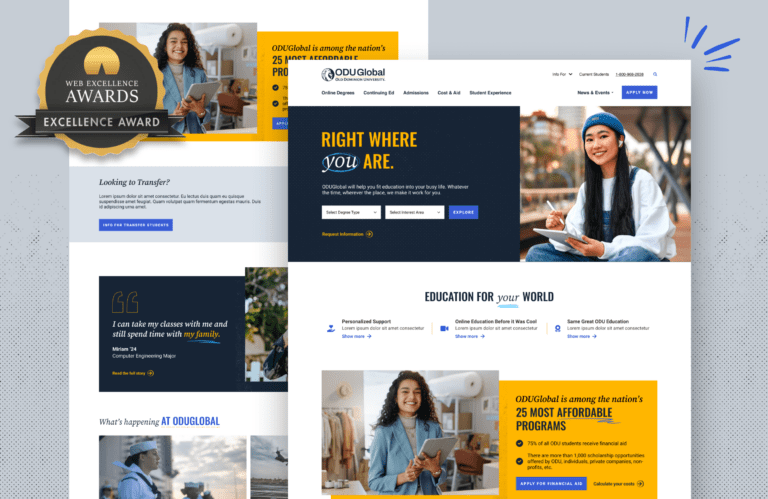
ODU Global
ODUGlobal KWALL partnered with ODU to redesign the ODUGlobal website, creating a more user-friendly, visually appealing, and highly functional platform. The project aimed to enhance prospective student engagement, improve the program search experience, and integrate seamlessly with ODU’s marketing and CRM systems. Our Process Our plan prioritized intuitive navigation, an enhanced program search tool, personalized…
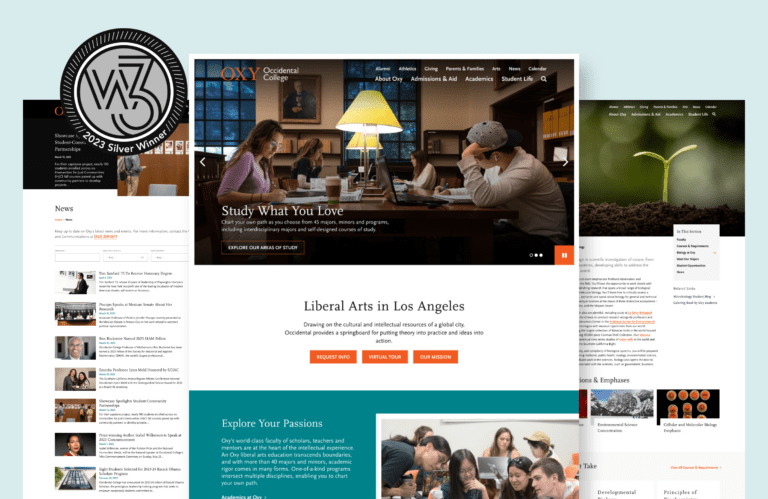
Occidental College
Occidental College As Los Angeles’ first and only liberal arts college, Occidental has an unflagging commitment to provide a truly superior academic experience for its students. The problem with their existing site was that prospective and current students found it difficult to find all the information they needed in one easily accessible place. Across all…
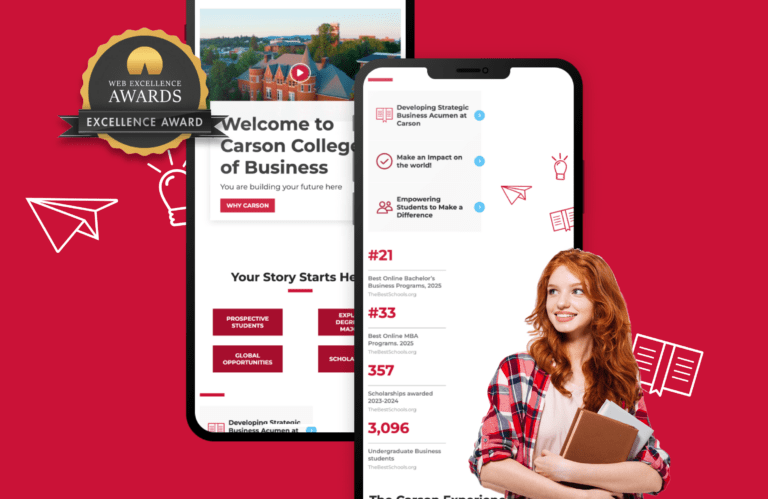
Washington State University
Washington State University WSU’s Carson College of Business (CCB) offers students the local and international experiences they need to become leaders across the Washington state community. Future business leaders choose Carson to help them navigate the world of hospitality and business ethics. But the previous CCB website offered the opposite: a user experience lacking discoverability…
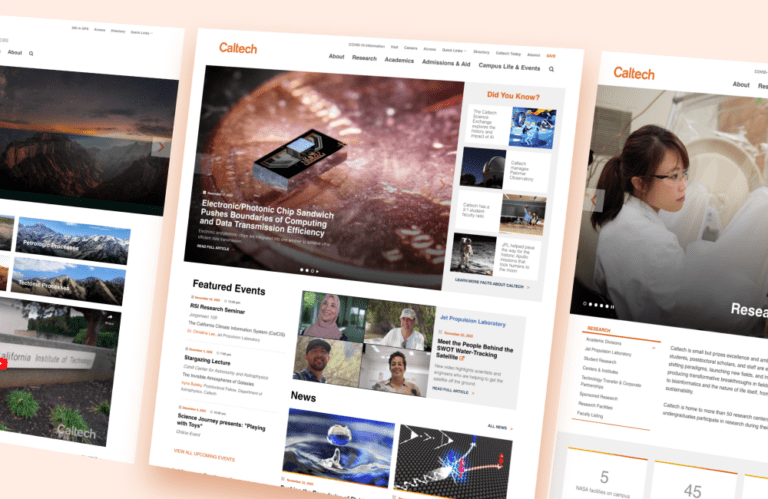
Caltech
Caltech There is no other university in the world quite like Caltech. As a result, there is intense interest in everything that goes on at the university. The site architecture has to serve the needs of visitors who know what specific content they’re looking for, and those wishing to learn about Caltech in general. There…
